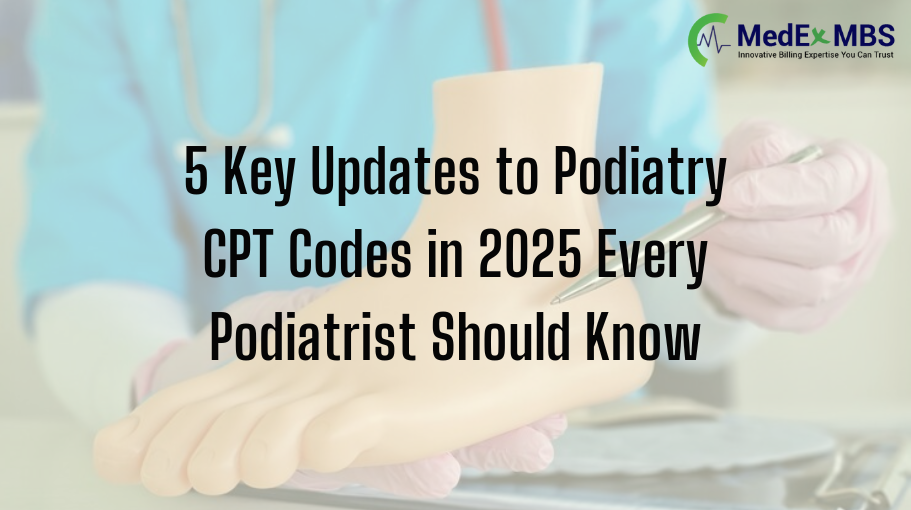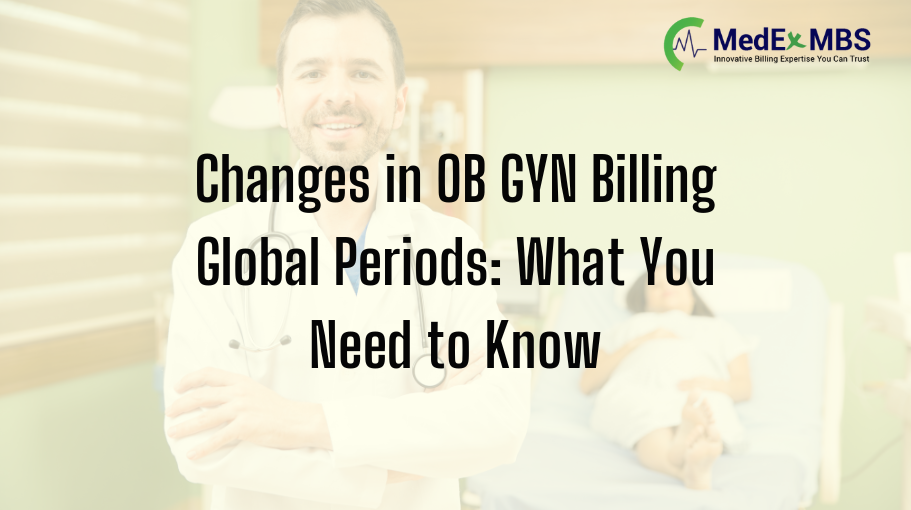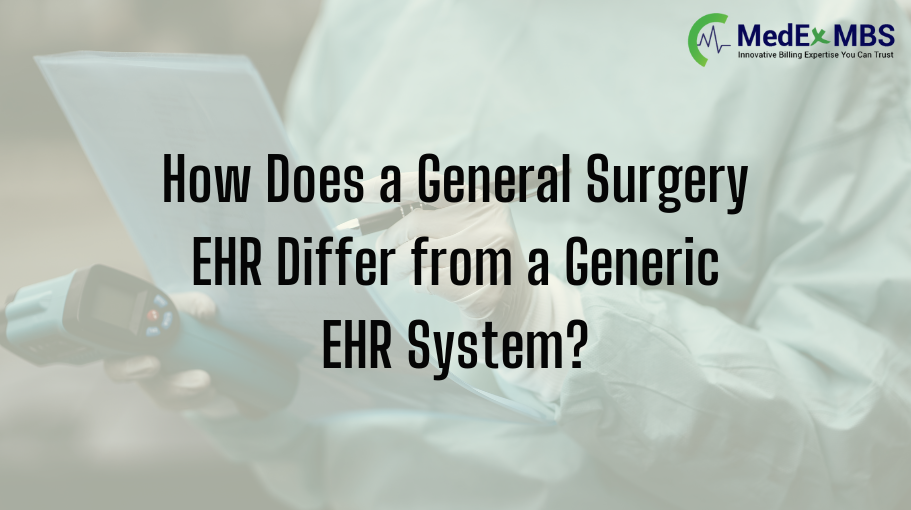5 Key Updates to Podiatry CPT Codes in 2025 Every Podiatrist Should Know

In 2025, the American Medical Association implemented significant modifications to the podiatry CPT codes. Podiatrists are advised against using the previous billing methods, as this may jeopardize their claims, leading to denials, delays, and potential revenue loss. The introduction of new telemedicine codes, the elimination of outdated telephone codes for E/M and wound care, along with remote monitoring, is transforming the documentation process for podiatrists regarding patient care. These coding updates necessitate that podiatrists familiarize themselves with the codes applicable to virtual consultations, wound management, and patient remote monitoring. To avoid extended delays in payment due to erroneous claims, clinics are required to update their billing practices, train their staff, and improve documentation. Whether submitting a claim for a toe amputation (CPT code 28810, CPT 28820), an annual nail debridement (CPT code 11721), or a virtual consultation in podiatry, it is crucial to be aware of these changes; ignorance is not an acceptable stance. This blog will detail the five key changes affecting your standard podiatry CPT codes, elucidate their underlying reasons, and provide guidance on their effective implementation to protect reimbursements and ensure compliance in 2025. New Telemedicine CPT Codes for Foot & Office Visits Podiatrists frequently consult with patients via video or phone. In 2025, new telemedicine codes were introduced for these types of visits. The CPT code set now includes codes 98000–98015 for real-time virtual patient interactions. These new codes enable physicians to bill for video consultations (for new patients: 98000–98003; for returning patients: 98004–98007) and audio-only phone consultations (for new patients: 98008–98011; for returning patients: 98012–98015). Podiatrists are required to utilize these new codes whenever a consultation occurs via live video or phone. This update supersedes the previous approach of merely appending a modifier to a CPT code for a podiatry office visit; now, distinct telemedicine codes must be employed. Deletion of Old Telephone E/M Codes With the introduction of new telemedicine codes, the previous telephone-only evaluation and management codes have been eliminated. The podiatry CPT codes 99441–99443, which were utilized for doctor-patient phone consultations, were officially removed as of January 1, 2025. Consequently, podiatrists are advised against submitting codes 99441–99443 on their claims. Instead, if a phone consultation qualifies as a patient visit, the physician will employ one of the newly established audio-only telemedicine codes (98008–98015) mentioned earlier. This transition ensures that physicians utilize the most current CPT codes for virtual healthcare. New Virtual Check-In Code CPT 98016 Additionally, there is a new code designated for brief patient-initiated check-ins. In 2025, HCPCS G2012, the previous code for a short patient phone check-in, was abolished. It has been succeeded by CPT code 98016. This code encompasses a “brief communication technology-based service” with an established patient. This service involves a 5–10 minute telephone or video call initiated by the patient, during which the physician provides advice or triages the issue. Video is not a requirement for code 98016, and it is applicable only if the patient contacts the doctor more than 7 days after an in-person visit, and it does not result in an immediate follow-up. Podiatrists can now utilize code 98016 in place of the former G2012 for short virtual check-ins. New Skin Cell Suspension Autograft Codes (15011–15018) Podiatrists addressing severe foot wounds, such as significant burns or diabetic ulcers, now have new coding options available in the CPT manual. In 2025, a series of codes for “skin cell suspension autografting” was introduced. These are podiatry CPT codes 15011–15018, which describe an innovative procedure where a small skin sample is transformed into a cell “spray” that can cover a larger wound area. For instance, a small skin sample measuring 1 cm² can be utilized to treat a wound of 80 cm², such as a significant foot ulcer. The codes 15011–15014 pertain to the harvesting and preparation of skin cells, while codes 15015–15018 relate to the application of these cells onto the wound. Podiatrists managing intricate foot wounds are now able to utilize these specific codes rather than relying on more generic graft codes. Updated Digital Health Monitoring Codes (98975–98978) The update for 2025 has also modified the codes associated with remote patient monitoring and digital therapy, which may affect the field of podiatry. The changes made by the AMA to the CPT indicate that CPT 98975 has been amended to encompass “digital therapeutic intervention,” and codes 98976–98978 have been revised to account for the provision of devices or applications utilized in patient monitoring. In straightforward terms, this signifies that there is now formal CPT acknowledgment for digital health instruments (such as home foot monitors or therapeutic applications) employed in patient care. A podiatrist who oversees a patient’s foot health through a digital program or device may apply these codes. These revisions ensure that the CPT system remains aligned with emerging health technologies. Podiatry CPT Codes: 2025 New & Removed Codes Code Range Short Name When to Use Note 99441 / 99443 Deleted telephone E/M codes Do not submit; phone codes removed. Deleted Jan 1, 2025; use 98008–98015 for audio-only visits. 98016 Virtual check-in (brief) Short 5–10 min patient-initiated phone/video check-ins. Replaces HCPCS G2012; use only if not leading to an immediate visit. 15011 / 15018 Skin cell suspension autograft For harvesting, preparing, and spraying skin-cell grafts on large wounds. Use for complex foot wounds (e.g. diabetic ulcers) instead of generic graft codes. 98975 / 98978 Digital health / remote monitoring For monitoring devices or digital therapeutic programs. Use when a device or app is part of patient monitoring or therapy. 11721 Nail debridement (6+ nails) When medically necessary, nail debridement of 6 or more nails is done. Document the nail and medical reason (infection, pain, ADL impact). 28810 / 28820 Toe amputation CPT
Changes in OB GYN Billing Global Periods: What You Need to Know

Only one specific area has been modified. In 2025, new telehealth CPT codes were introduced; however, the adoption by Medicare remains limited. Being aware of these updates safeguards your revenue and ensures compliance, as improper obstetric global billing consistently ranks among the leading causes of claim denials. What is a Global Period in OB GYN? Global-period billing includes prenatal, delivery, and postpartum services consolidated into a single bundled reimbursement for obstetrical care. Instead of billing individually for each prenatal appointment, delivery, and postpartum care, you submit one all-encompassing code that addresses the complete pregnancy experience from the initial prenatal visit to the concluding postpartum examination. The global package typically includes postpartum care for six weeks following delivery, after which additional visits necessitate separate billing. This is distinct from surgical global periods that utilize specific day counts, such as 10-day or 90-day periods. OB-GYN global billing encompasses the entire range of routine pregnancy care, irrespective of duration. Core Codes You Need to Know Global Package Codes Utilize when your practice provides comprehensive pregnancy care: 59510: Cesarean delivery with complete care. 59610: Vaginal birth after previous cesarean with complete care. 59618: Cesarean after attempted VBAC with complete care. Component Codes Utilize when you only manage part of the pregnancy care: 59409/59514: Delivery only (vaginal/cesarean). 59425: Antepartum care, 4-6 visits. 59426: Antepartum care, 7+ visits. 59430: Postpartum care only. Decision Rule: Did you only manage certain aspects while other providers took care of different parts? Utilize component codes. New Telehealth CPT Codes with Limited Medicare Recognition New CPT codes have been introduced for the year 2025, which include 98000-98007 (audio-video), 98008-98015 (audio-only), and 98016 (brief communication). These codes inherently represent telehealth services and do not necessitate modifier 95. However, Medicare currently acknowledges only 98016; 98000-98015 are not reimbursable by Medicare (although some commercial plans may cover them). Virtual consultations that are included in standard prenatal or postpartum care continue to be part of the global package. They cannot be billed separately merely because they are performed through telehealth. However, telehealth consultations for complications or issues that fall outside the standard global package may be billed separately using the relevant evaluation and management codes or code 98016 when applicable. What Did NOT Change? CPT codes remain unchanged from 2024. Global package regulations have not altered. Bundling principles remain consistent. The regulations regarding split and shared visits will persist from 2024, upholding the same substantive portion requirements and the use of modifier FS (applicable only to facility settings). Services that were eligible for separate billing in 2024 will remain eligible for separate billing in 2025. Telehealth Rules for 2025 Bundled services will remain bundled irrespective of the delivery method. Routine prenatal telehealth appointments, virtual postpartum check-ups, and standard pregnancy education sessions held online are encompassed within your global package payment. What Can You Bill Separately? Telehealth visits addressing complications. Virtual care for unrelated medical issues. Coding Requirements Utilize service code 02 for alternative telehealth locations or 10 for a patient’s residence. For traditional E/M codes, most commercial insurers require modifier 95, although Medicare requirements differ by MAC. The recently introduced telehealth CPT codes (98000-98015) do not necessitate the use of modifier 95, as telehealth is inherently encompassed within the code description; nevertheless, it is crucial to highlight that Medicare does not recognize these codes. Important Note Medicare’s expanded telehealth flexibilities (including home as the originating site) are effective until September 30, 2025. Code 98016 supersedes HCPCS G2012 for brief communications. Making the Right Choice: Global vs Component Codes Use Global Codes When Your practice manages the entire pregnancy. Use Component Codes When The patient transitions between practices. You only perform delivery without providing prenatal care. Another practice manages postpartum care. Real Examples A patient moves to a different location during pregnancy: The initial practice charges for the antepartum code, whereas the new practice charges for the global code. Hospital delivery involving a different obstetric group: The prenatal practice charges for the antepartum code, while the hospital group charges for the delivery-only code. You handle the call and provide an unknown patient: Charge the delivery-only code. Essential Modifiers for 2025 Essential Modifiers You Should Use Modifier 25: Significant, separately identifiable E/M service on the same day as another procedure (note that this modifier is often misapplied in OB claims, so ensure proper documentation). Modifier 95: Telehealth services when utilizing traditional E/M codes (not required for new telehealth-specific CPT codes). Modifiers That Don’t Belong on OB Claims Modifier 90: Laboratory services for reference (not applicable during global periods). Modifier 91: Laboratory tests repeated (not applicable during global periods). These laboratory modifiers are irrelevant to obstetric global billing and can cause confusion in claims. Understanding Various Payer Requirements Medicare’s Strategy for OB Global Billing Medicare employs the “MMM” indicator for obstetric global packages, setting them apart from surgical global periods. Telehealth coverage remains available until September 30, 2025, allowing patients to access services from home without geographic limitations. Commercial Insurance Differences Many insurers align with Medicare’s guidelines but may exhibit particular variations: The precise number of postpartum visits included. Distinct telehealth stipulations. State-specific regulations (such as North Carolina’s new F-codes effective after July 1, 2025). It is essential to confirm the policies of individual payers instead of presuming consistent coverage. How to Accurately Bill for OB/GYN in 2025? Standard Pregnancy Care The patient receives comprehensive prenatal care, undergoes delivery, and completes postpartum care within your practice. Code: Employ the correct global code (59400, 59510, etc.) Mid-Pregnancy Transfer If a patient transfers to your practice at 28 weeks, you will provide continuous care and delivery. Code: Apply the global code as you have delivered significant antepartum care along with the delivery. Telehealth for Postpartum Complications Should a patient experience postpartum depression necessitating a virtual consultation beyond standard care? Code: Utilize the appropriate E/M code
How Does a General Surgery EHR Differ from a Generic EHR System?

Currently, approximately 96% of hospitals in the United States utilize an Electronic Health Record (EHR) system; however, nearly half of surgical specialists continue to rely on generic systems. This leads to slower documentation processes, an increase in the number of clicks required, and the omission of crucial details essential for surgical care. Research indicates that transitioning from a generic EHR to a platform specifically designed for surgery can enhance documentation efficiency from 6.02 to 7.20 on a scale of 10. This transition results in more precise records, improved claim tracking, and enhanced workflow support. But what precisely distinguishes a general surgery EHR from a generic one? Why is this distinction significant for surgeons, patients, and hospitals? Let us begin with the fundamentals. What Distinguishes General Surgery EHR from Generic EHRs? Not all EHR systems are created equal. A general surgery EHR is specifically tailored for the workflows associated with surgical billing systems, whereas a generic EHR offers only broad, standard functionalities. A general surgery EHR encompasses templates for pre-operative and post-operative procedures, along with tools for creating operative notes. It also features surgical scheduling capabilities and coding tools specific to surgery. In contrast, a generic EHR provides basic functionalities such as charting, scheduling, and lab orders. However, surgeons frequently require customization, which can hinder efficiency and increase the likelihood of billing errors. Comparison of General Surgery EHR and Generic EHR General Surgery HER Generic EHR Templates for Pre-op, intra-op, and post-op Basic charting templates OR block scheduling and surgical calendars Standard patient scheduling CPT, ICD-10, and modifiers tailored for surgery General coding support Auto-populated operative notes Manual or limited note fields Tracks global periods and compliance Limited compliance features Reduces denials, maximizes revenue. Higher risk of errors and lost revenue What is a General Surgery EHR? A general surgery electronic health record (EHR) denotes a digital record system tailored specifically for surgical practices. It aligns with the workflow of surgeons, resulting in more precise documentation, easier compliance, and the ability for practices to secure full reimbursement. What is a Generic EHR? A Generic EHR is a flexible electronic health record system designed to serve multiple specialties. It provides fundamental EHR functionalities. While a generic EHR is effective for routine care, it typically lacks surgical templates and billing tools. Workflow in General Surgery EHR vs. Generic EHR General Surgery EHR Workflow An EHR tailored for the surgery streamlines the entire process. Pre-operative procedures begin with integrated templates. Operating room time is scheduled directly within the system, eliminating unnecessary back-and-forth communication. Subsequently, it applies the appropriate CPT codes and modifiers according to U.S. regulations to mitigate billing errors. Follow-up appointments are linked to the same episode of care, ensuring that nothing is overlooked. Generic EHR Workflow In contrast, a generic EHR requires more effort for every task. Pre-operative and post-operative notes must be created from scratch or extensively modified. Operating room scheduling occurs outside the system, leading to delays and miscommunication. Operative notes are entered manually, increasing the likelihood of omitting important details. Billing necessitates a review of codes and modifiers due to the absence of surgery-specific prompts. Additionally, follow-up appointments are monitored as standard office visits, resulting in compliance issues and slower reimbursement. Step in Workflow General Surgery EHR Generic EHR Pre-Op Prep Integrated surgical templates Custom notes created manually. OR Scheduling Direct operating room block scheduling Managed externally or with additional tools Operative Notes Auto-filled procedure fields Manual, labor-intensive entry Billing & Coding Surgery-specific CPT, modifiers, and global period tracking General coding: high risk of errors Post-Op & Follow-Up Bundled care is automatically tracked Handled as regular visits; risk of missed compliance. Differences Between General Surgery EHR Billing and Generic EHR General Surgery EHR Billing Specialty coding: Incorporates built-in CPT and ICD-10 codes specifically for surgical procedures. Modifier support: Automatically applies the appropriate surgical modifiers. Global period tracking: Monitors bundled pre-, intra-, and post-operative periods to prevent double-billing. Op note integration: Extracts billing codes directly from the operative note. Fewer denials: Surgery-specific validations minimize coding errors and denials. General surgery billing software leads to expedited claim submissions, cleaner claims, reduced denials, and enhanced reimbursement accuracy. Generic EHR Billing Basic Coding Support: Manages general CPT/ICD-10 codes but lacks the specificity required for surgical procedures. Limited Modifier Use: Modifiers often need to be manually added by coders or billers. No Global Period Tracking: Considers follow-up visits as separate appointments, which may lead to compliance issues and denials. Manual Data Entry: Operative details do not automatically link to billing; coders are required to manually extract the information. Higher Denial Rates: Increased errors and missed charges arise from the absence of specialty-specific checks. In comparison to general surgery medical billing software, generic billing necessitates more manual effort, results in higher denial rates, prolongs the revenue cycle, and increases the risk of underpayment for surgical practices. What are the Advantages and Disadvantages of General Surgery EHR and Generic EHR? General Surgery EHR Advantages Disadvantages Templates tailored to the specialty Higher expenses in comparison to general EHRs Management of OR block scheduling and surgical workflows May necessitate additional training for staff to utilize advanced functionalities Integrated surgical coding support (CPT, ICD-10, modifiers, global periods) Demands extensive staff training Enhances billing precision and decreases claim denials Excessive dependence on EHRs Boosts compliance with specialty-specific regulations The implementation process is prolonged. Generic EHR Advantages Disadvantages Lower initial costs compared to specialty EHRs Lacks templates and workflows specific
